Abstract
1. The effects of noradrenaline and isoprenaline on the repolarization phase of the action potential have been studied in the Purkinje fibres of sheep heart, electrically driven at constant rates.
2. Isoprenaline (2, 5 and 8 × 10-8 g/ml.) increases the slope of phase 2 of repolarization and decreases the plateau length; the resulting decrease in action potential duration is concentration dependent, but not rate dependent.
3. The effect of isoprenaline on the action potential duration is entirely blocked by propranolol (10-7 g/ml.) and unaffected by phentolamine (5 × 10-7 g/ml.).
4. In phentolamine (5 × 10-7 g/ml.) pretreated preparations the response induced by noradrenaline (5 × 10-8, 1 and 5 × 10-7 g/ml.) is very similar to that induced by isoprenaline.
5. In propranolol (2·5 × 10-7 g/ml.) pretreated preparations noradrenaline causes a lengthening of the plateau phase and an increase in action potential duration.
6. The relationship of these results to the presence of both α- and β-receptors in cardiac Purkinje fibres is discussed.
Full text
PDF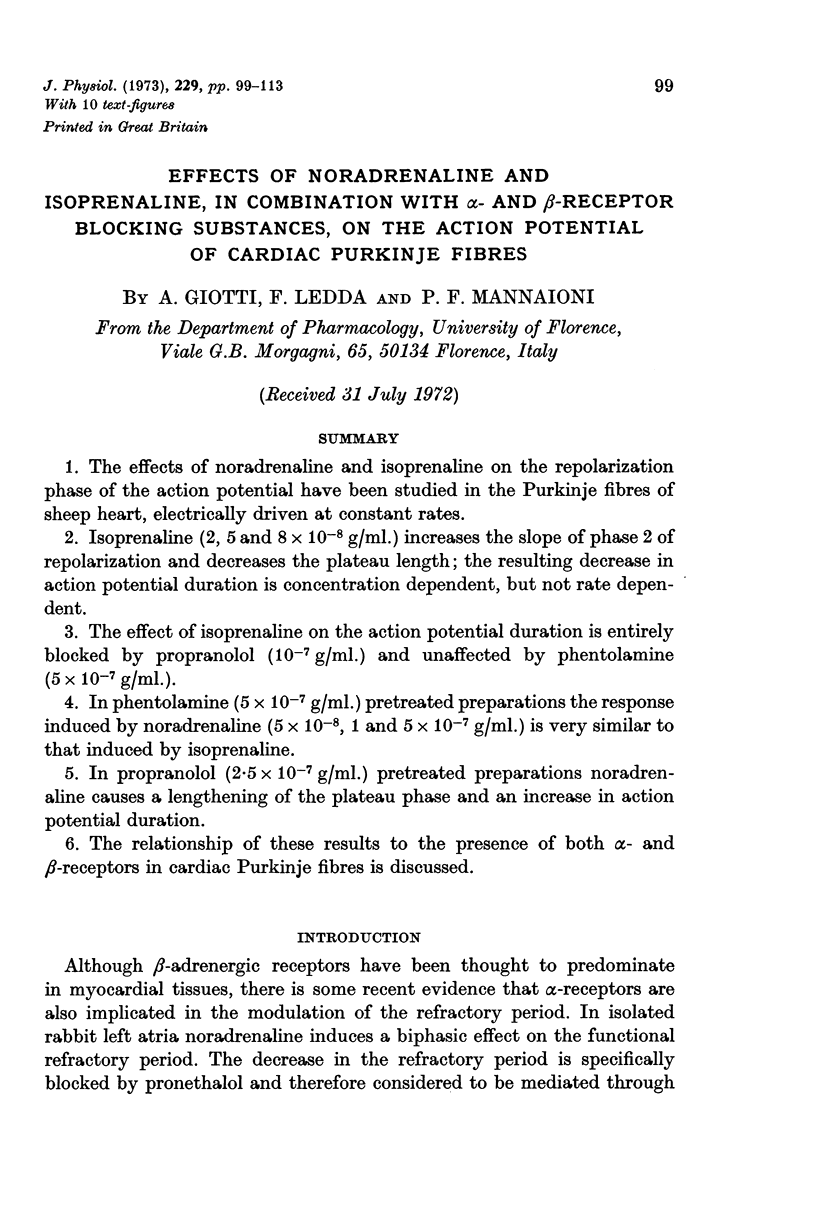
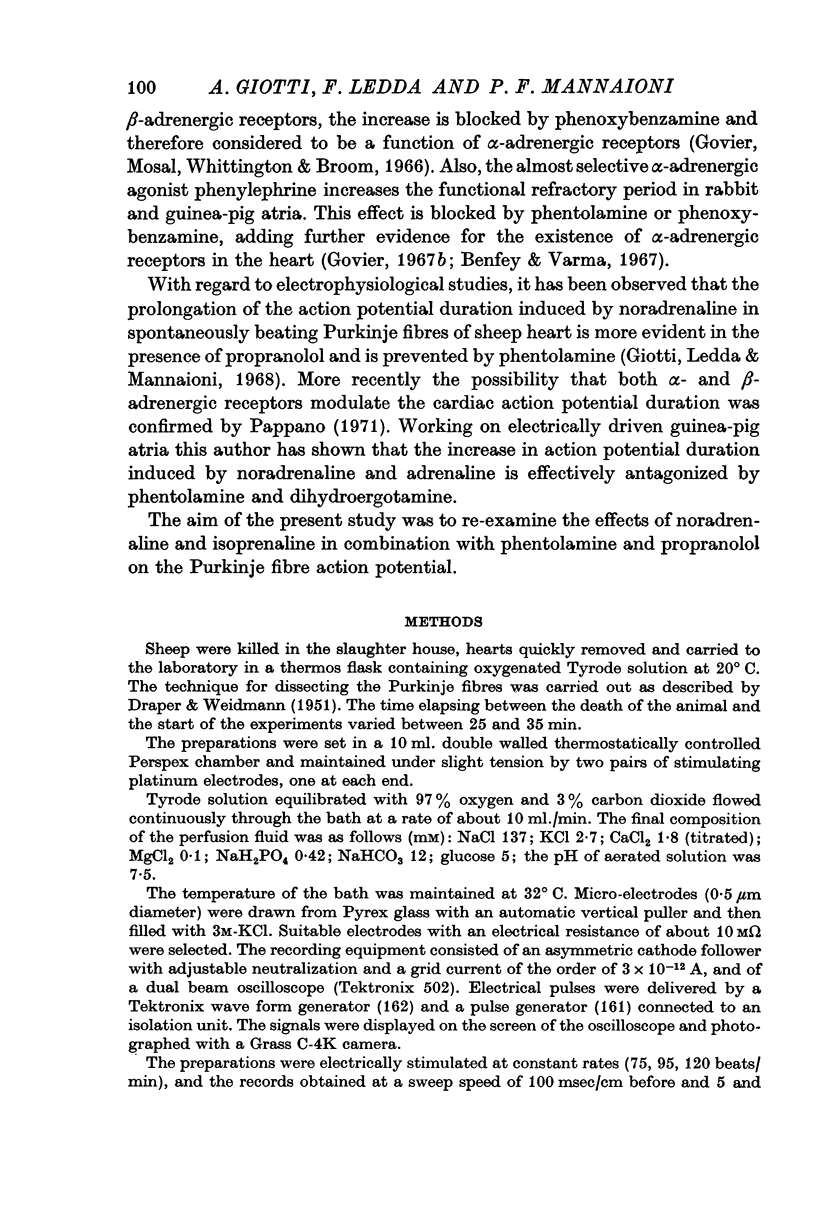

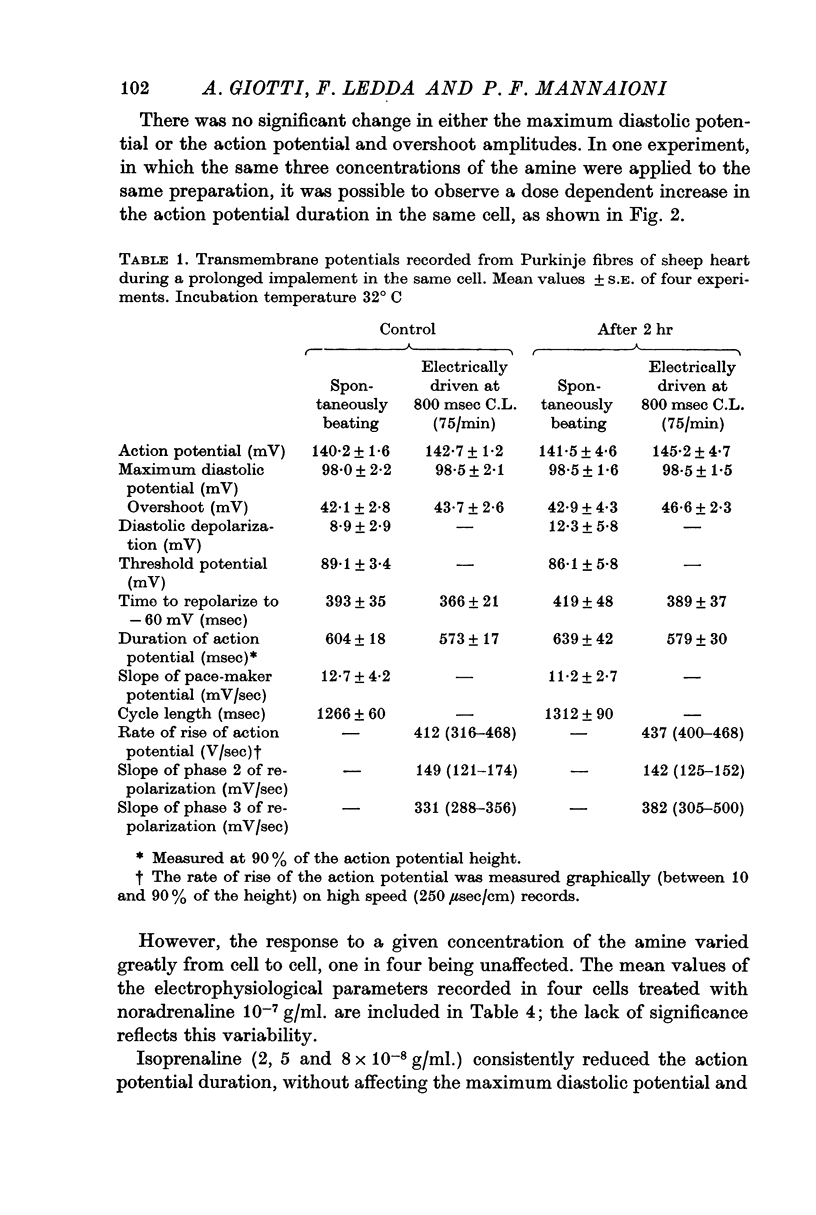
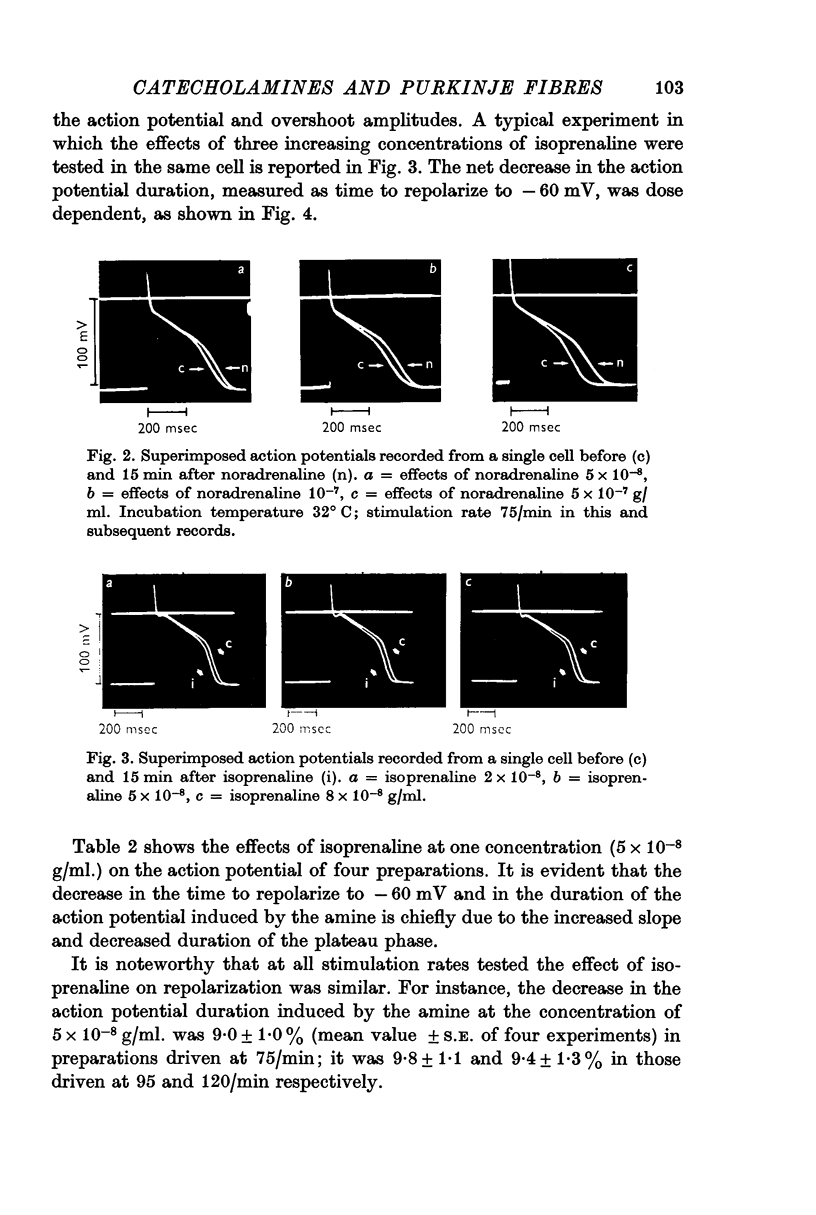
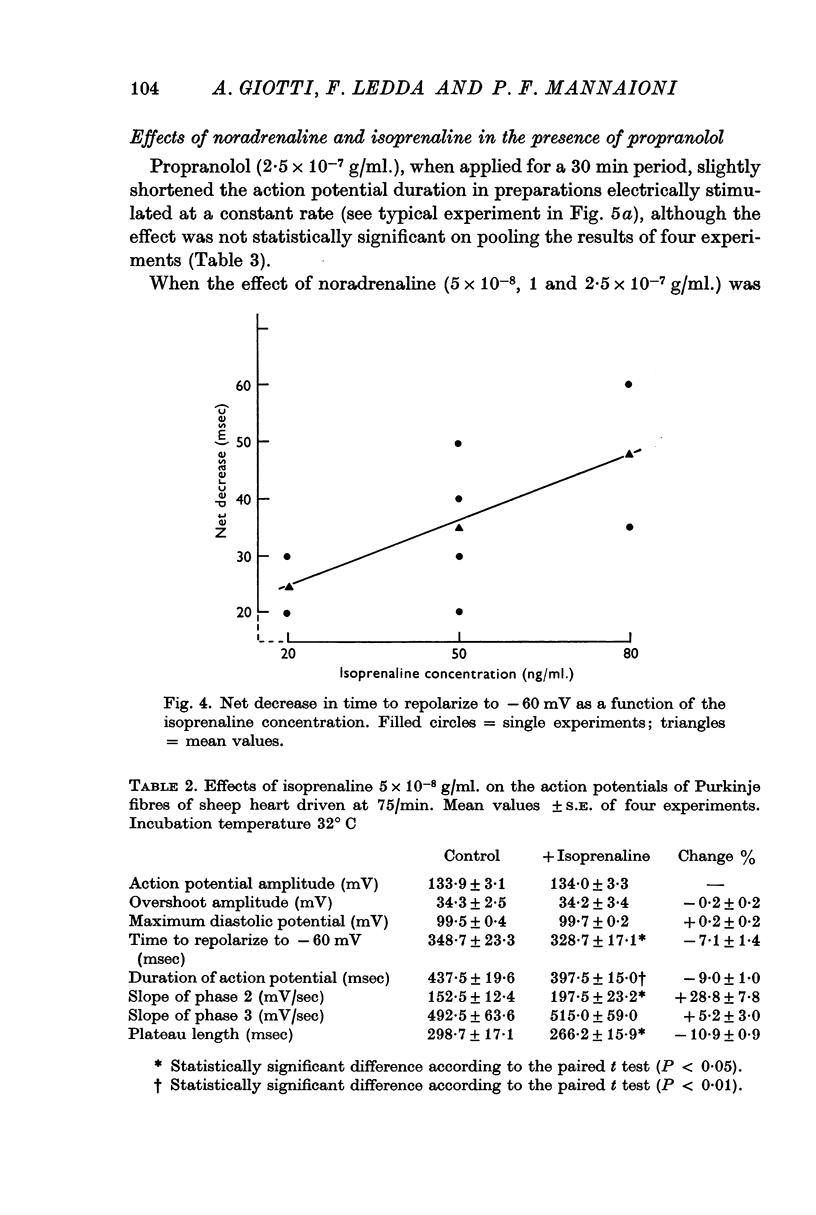

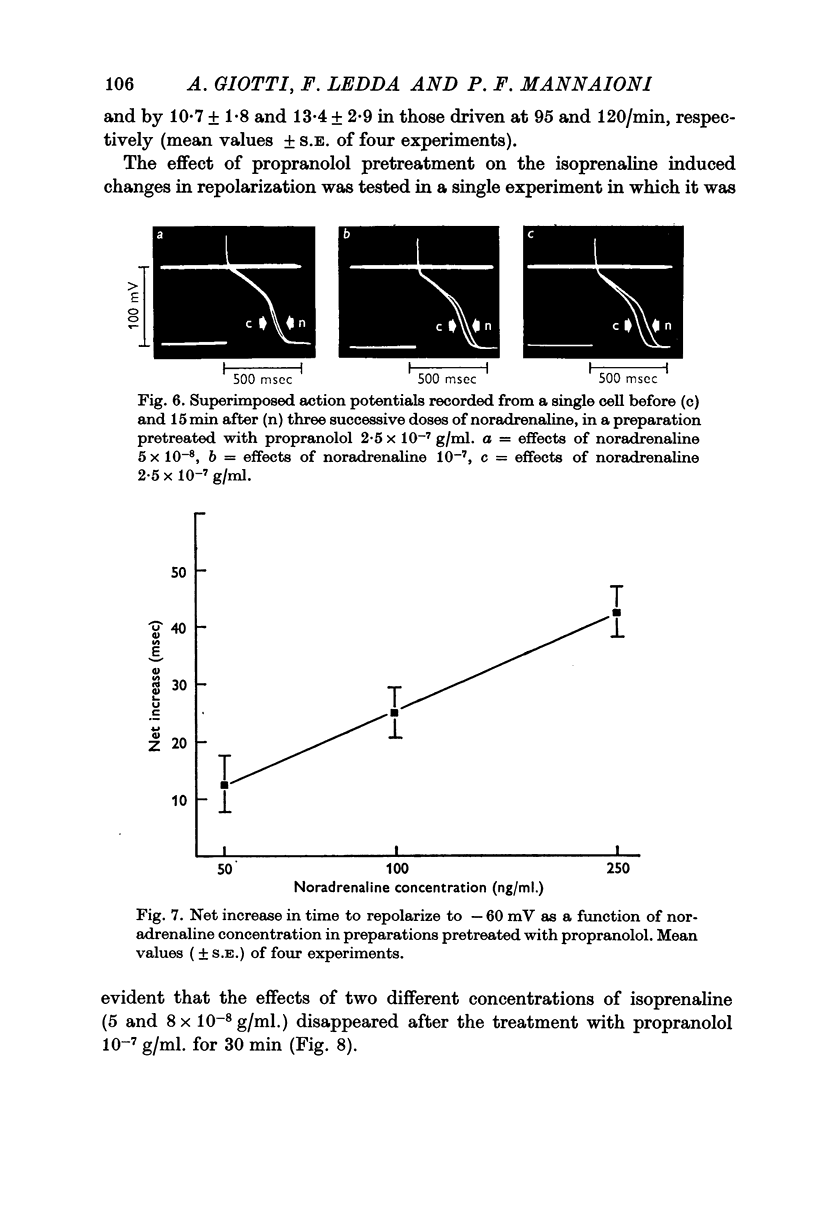


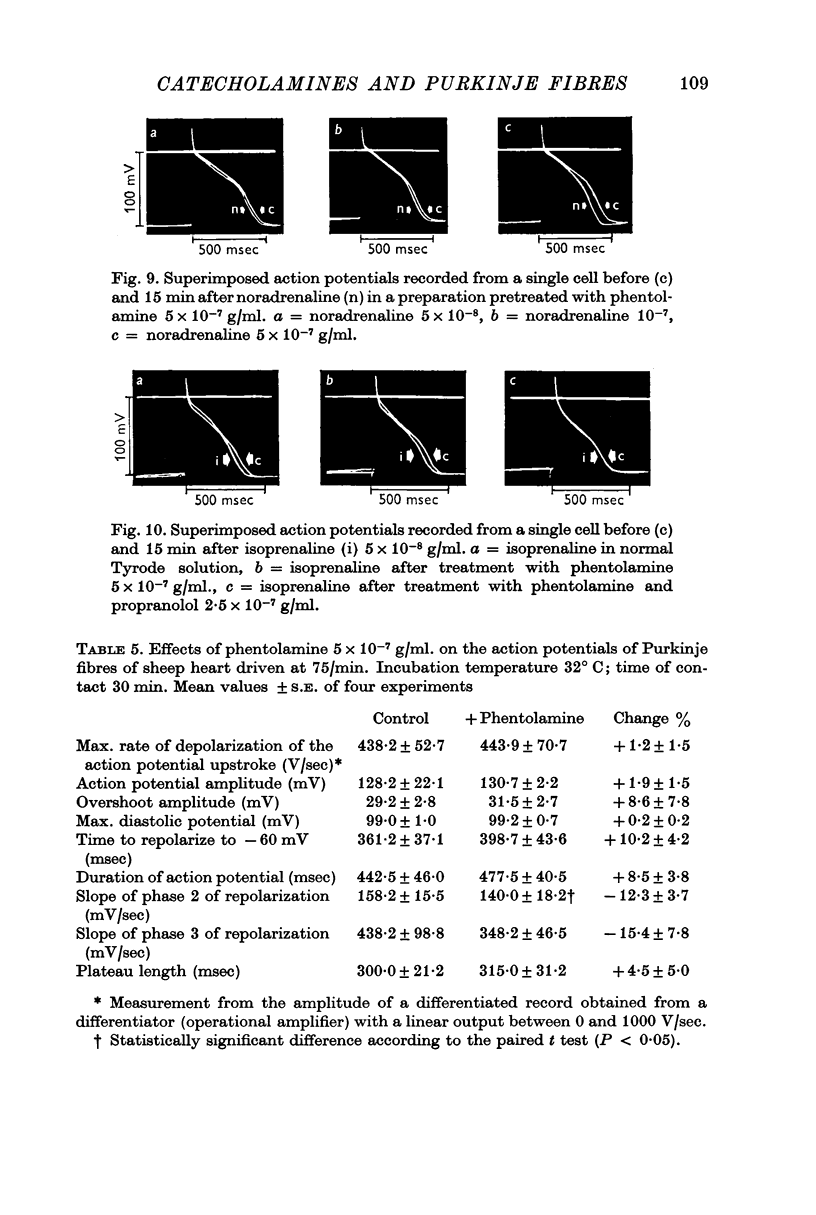

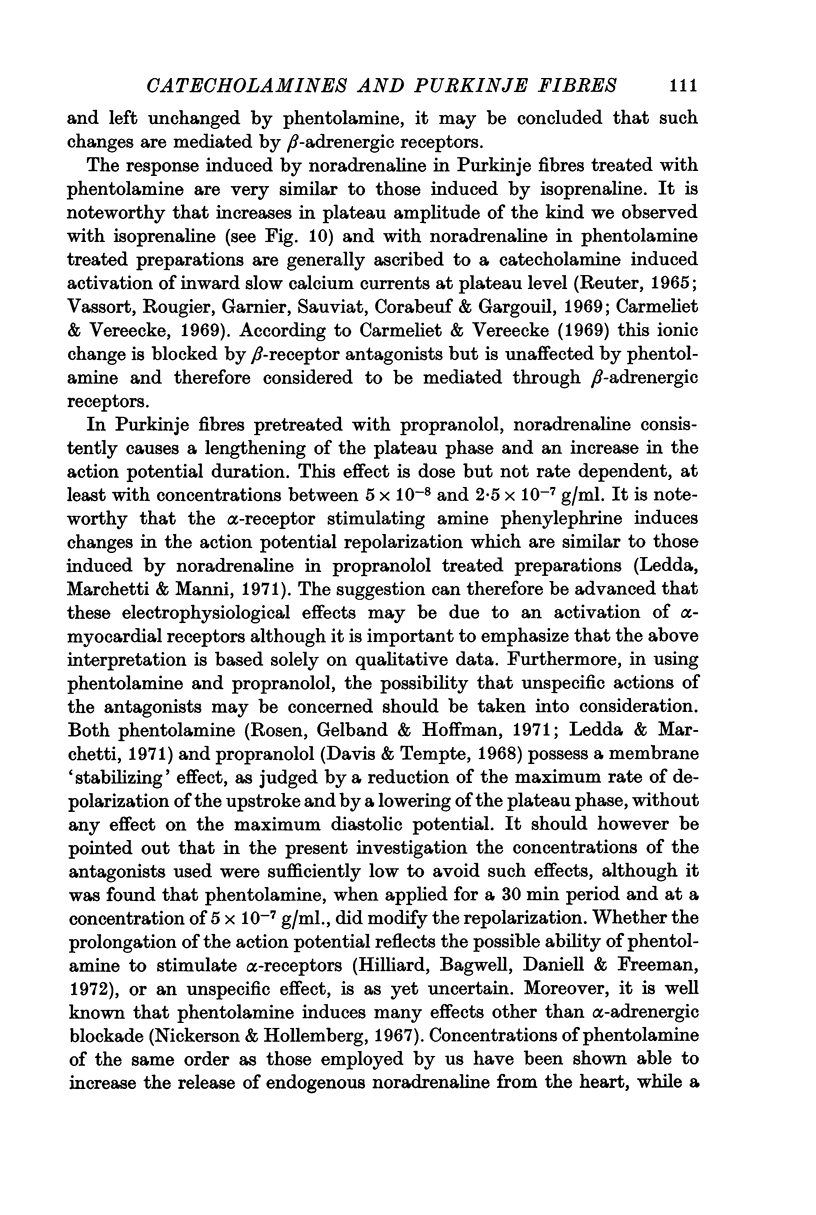
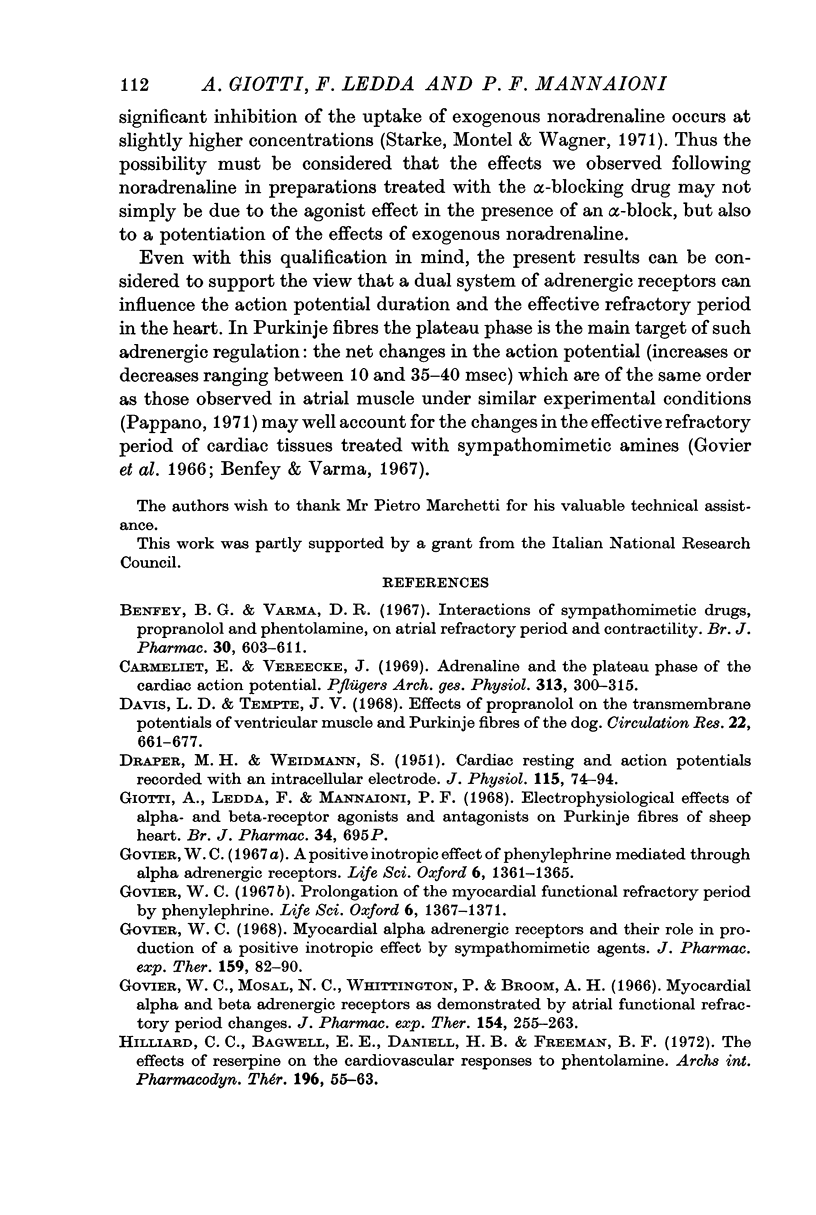
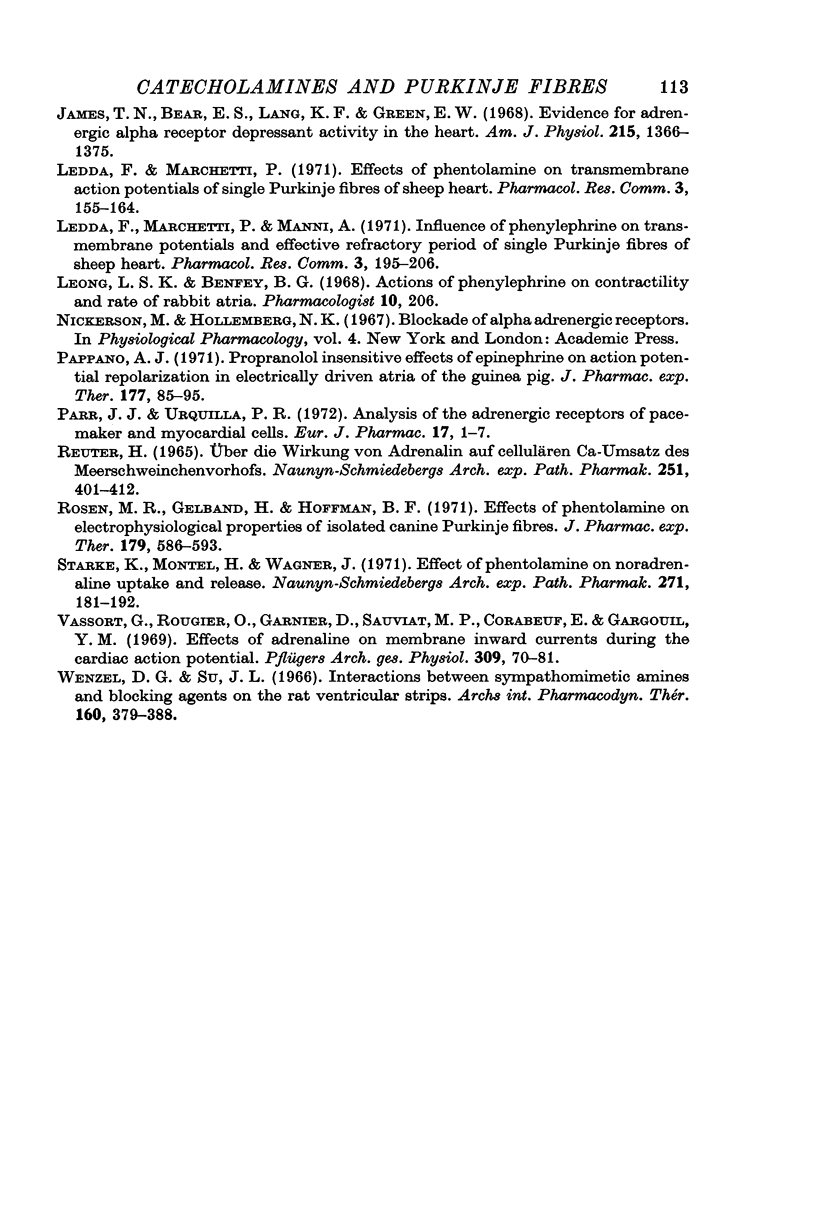
Selected References
These references are in PubMed. This may not be the complete list of references from this article.
- Benfey B. G., Varma D. R. Interactions of sympathomimetic drugs, propranolol and phentolamine, on atrial refractory period and contractility. Br J Pharmacol Chemother. 1967 Aug;30(3):603–611. doi: 10.1111/j.1476-5381.1967.tb02166.x. [DOI] [PMC free article] [PubMed] [Google Scholar]
- Carmeliet E., Vereecke J. Adrenaline and the plateau phase of the cardiac action potential. Importance of Ca++, Na+ and K+ conductance. Pflugers Arch. 1969;313(4):300–315. doi: 10.1007/BF00593955. [DOI] [PubMed] [Google Scholar]
- DRAPER M. H., WEIDMANN S. Cardiac resting and action potentials recorded with an intracellular electrode. J Physiol. 1951 Sep;115(1):74–94. doi: 10.1113/jphysiol.1951.sp004653. [DOI] [PMC free article] [PubMed] [Google Scholar]
- Davis L. D., Temte J. V. Effects of propranolol on the transmembrane potentials of ventricular muscle and Purkinje fibers of the dog. Circ Res. 1968 May;22(5):661–677. doi: 10.1161/01.res.22.5.661. [DOI] [PubMed] [Google Scholar]
- Giotti A., Ledda F., Mannaioni P. F. Electrophysiological effects of alpha- and beta-receptor agonists and antagonists on Purkinje fibres of sheep heart. Br J Pharmacol. 1968 Nov;34(3):695P–696P. [PMC free article] [PubMed] [Google Scholar]
- Govier W. C. A positive inotropic effect of phenylephrine mediated through alpha adrenergic receptors. Life Sci. 1967 Jul 1;6(13):1361–1365. doi: 10.1016/0024-3205(67)90182-8. [DOI] [PubMed] [Google Scholar]
- Govier W. C., Mosal N. C., Whittington P., Broom A. H. Myocardial alpha and beta adrenergic receptors as demonstrated by atrial functional refractory-period changes. J Pharmacol Exp Ther. 1966 Nov;154(2):255–263. [PubMed] [Google Scholar]
- Govier W. C. Myocardial alpha adrenergic receptors and their role in the production of a positive inotropic effect by sympathomimetic agents. J Pharmacol Exp Ther. 1968 Jan;159(1):82–90. [PubMed] [Google Scholar]
- Hilliard C. C., Bagwell E. E., Daniell H. B., Freeman B. F. The effects of reserpine on the cardiovascular responses to phentolamine. Arch Int Pharmacodyn Ther. 1972 Mar;196(1):55–63. [PubMed] [Google Scholar]
- James T. N., Bear E. S., Lang K. F., Green E. W. Evidence for adrenergic alpha receptor depressant activity in the heart. Am J Physiol. 1968 Dec;215(6):1366–1375. doi: 10.1152/ajplegacy.1968.215.6.1366. [DOI] [PubMed] [Google Scholar]
- Pappano A. J. Propranolol-insensitive effects of epinephrine on action potential repolarization in electrically driven atria of the guinea pig. J Pharmacol Exp Ther. 1971 Apr;177(1):85–95. [PubMed] [Google Scholar]
- Parr J. J., Urquilla P. R. Analysis of the adrenergic receptors of pacemaker and myocardial cells. Eur J Pharmacol. 1972 Jan;17(1):1–7. doi: 10.1016/0014-2999(72)90261-0. [DOI] [PubMed] [Google Scholar]
- Reuter H. Uber die Wirkung von Adrenalin auf den cellulären Ca-Umsatz des Meerschweinchenvorhofs. Naunyn Schmiedebergs Arch Exp Pathol Pharmakol. 1965 Aug 20;251(4):401–412. [PubMed] [Google Scholar]
- Rosen M. R., Gelband H., Hoffman B. F. Effects of phentolamine on electrophysiologic properties of isolated canine purkinje fibers. J Pharmacol Exp Ther. 1971 Dec;179(3):586–593. [PubMed] [Google Scholar]
- Starke K., Montel H., Wagner J. Effect of phentolamine on noradrenaline uptake and release. Naunyn Schmiedebergs Arch Pharmakol. 1971;271(2):181–192. doi: 10.1007/BF00998579. [DOI] [PubMed] [Google Scholar]
- Vassort G., Rougier O., Garnier D., Sauviat M. P., Coraboeuf E., Gargouïl Y. M. Effects of adrenaline on membrane inward currents during the cardiac action potential. Pflugers Arch. 1969;309(1):70–81. doi: 10.1007/BF00592283. [DOI] [PubMed] [Google Scholar]
- Wenzel D. G., Su J. L. Interactions between sympathomimetic amines and blocking agents on the rat ventricle strip. Arch Int Pharmacodyn Ther. 1966 Apr;160(2):379–389. [PubMed] [Google Scholar]


